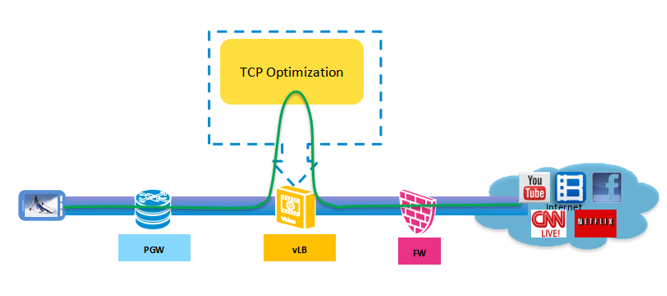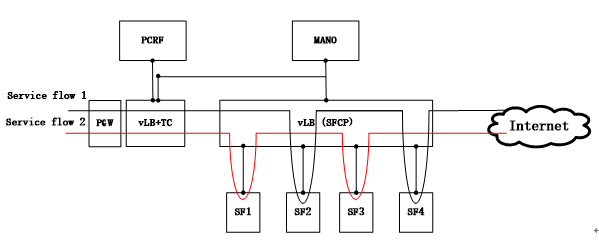Flexible and Open Data Value-added Services Boost the Construction of 5G Network
Time:2019-05-14
I. Challenges to the development of data traffic
With the rapid advancement of 5G network and the increasing density of networks, 5G brings not only the increase of network speed and capacity, but also lays a solid network basis for the construction of a social-information service innovation platform and the promotion of the digital transformation of traditional enterprises and industries.
At the moment, operators also need to focus on solving two major difficulties in the transition:
First, the IT infrastructure built by operators needs to be extended from virtualization to cloud. The application layer puts forward new requirements and challenges for a series of indicators such as flexible expansion, lightweight deployment, and flexible scaling-in/out in the IT cloudification process. Secondly, 5G's high bandwidth, low latency and massive connectivity will create rich and diverse business scenarios. Under this trend, it should be noted how telecom operators can guarantee the online time of new services, reduce network operation and maintenance costs, and achieve the agility and on-demand nature of the telecom network.
Based on the hardware and software architecture of traditional telecom equipment, it is difficult to address these new challenges. As a result, more operators are focusing on cloud-based NFV and containerization and service function chain solutions, which can help operators develop and deploy value-added services rapidly at low cost.
II. Industry development specifications and major industry solutions
At present, research on the service function chain (SFC) conducted by the Internet Engineering Task Force (IETF) is relatively systematical, and the international organization makes in-depth study and definition of SFC application scenarios, architecture, routing and forwarding, protocols, packet formats, etc. IETF has now dominated the technical standards of SFC. IETF refers to the network service function such as the virtual firewall/load balancer/gateway as the service function (SF), and the traffic is processed through a series of SFs to form a service function chain (SFC). In the virtualized network formed by the virtualization service function point SF, how to flexibly allocate traffic to a certain SF for processing to form an SFC is a problem that the SFC needs to solve.
The 3GPP SA1 working group also established issues related to SFC such as SEES (Service Exposure and Enablement Support) and FMSS (Flexible Mobile Service steering) in 2014. The main output is TR22.808V13 and TR 22.853V13. From different user demands and different service types, the service chain diversion and steering is made, and the discussions are made based on scenarios, such as application characteristic, user characteristic, network status, time and location, and MVNO.
III. ZTE full virtualization/container solution
Full virtualization solutions have become the consensus of operators, and container technology is a typical practical application in the Microservice architecture. ZTE’s service chain network elements or value-added service network elements, such as virtual load balancers, various VAS SF, and SFC platforms, support full virtualization/container orchestration and deployment. The deployment can support the following modes:
- Mode 1: The VNF is deployed in the VM resource pool.
- Mode 2: The VNF is deployed in the container resource pool.
- Mode 3: The VNF is partially deployed in the VM resource pool and partially deployed in the container resource pool.
1. Single value-added service scenario

Figure 1 Single-VAS vLB-based Solution
When the operator only needs to access the single-value-added service, as shown in the above figure, it is recommended to use the virtual load balancer to aggregate and distribute the Gi-port traffic.
2. Multi-VAS scenario
Since the protocols related to the service chain mode under SDN are not mature, IETF does not list them as the RFC standard. For the scenario of multi-VAS requirements, ZTE adopts the service chain solution based on the Overlay mode.

Figure 2 Multi-VAS Service Chain Overlay Based Solution
The solution completely separates service from forwarding, and the service chain solution has no special requirements for the transport layer. After receiving the service packet with the NSH header from the vLB + independent Traffic Classifier, the vLB (SFCP) strips the NSH header from the service packet and forwards it to the next SF node according to the stored service chain information. The Network Service Header (NSH) contains path information and optional metadata for creating a service data plane, and the next hop then encapsulates the original data packet of the last hop where NSH is stripped in the internal header for transmission. The NSH is deleted by the last SFF in the service chain or the SF that processes the packet. The purpose of encapsulating NSH is to create a topology-independent service data plane that forwards packets to the required VAS without changing the underlying network topology. Based on this solution, operators can start business chain services and take advantage of common switches/routers.
IV. ZTE 5G VAS
ZTE's data VAS solution not only provides flexible service data flow control, but also provides various value-added services, including functional services and optimized services.
1, Function services
Green Internet service:
- Security protection, for blocking web threats, including malware, phishing, and fraudulent websites
- Efficient work, for blocking or monitoring browser usage
- Parental control, for restricting teenage from accessing bad websites
- Bandwidth management, for controlling applications that consume excessive bandwidth, such as downloading movies and music
Header enrichment service:
The solution enables operators to perform HTTP or HTTPS request operations for integration with content providers. The flexible modification of the protocol header allows dynamic operation of HTTP or HTTPS requests based on various request attributes and operator-configured rule sets, including modifying/inserting headers and setting transparent and non-transparent modes.
Ad interception service:
Dynamic ad interception services intercept related content that is classified as an ad site. Some websites offer hosted online advertising content designed to attract Web traffic, deliver marketing messages, or capture email addresses.
2, Optimization services
- TCP optimization service:
According to the transmission characteristics of the wireless network environment and the behavior characteristics of mobile users, the cache forwarding and congestion control mechanism is used to optimize the TCP forwarding performance, and reduce the surf rate due to radio transmission obstacles and packet loss is reduced. Therefore, the solution improves and enhances the mobile user's online experience, including website access, FTP download, and video services.
- Video optimization service:
Video optimization services are implemented by applying advanced caching and transcoding techniques and other media-related TCP, HTTP and HTTPS optimization techniques. Media optimization is applicable to most commercial entity protocols, containers and codecs, covering most media-related traffic, including UGV (user-generated) video sites, news sites and other Internet video content.
- Web page optimization service:
Technologies such as optimization of cache, compression, and transport layers are used for traffic optimization, which is transparent to end users, allowing them to enjoy optimized traffic.
V. Market application and collaboration
ZTE's data VAS solution adopts a fully virtualized/containerized architecture, which takes full consideration of different scenarios of single-value-added service and multi-value-added services, and supports the integration with third-party value-added services. Its strong openness is considered to help the operator unit the value-added service advantages of various manufacturers.
At present, the program has been actually commercialized in some Southeast Asian international operators, and at the same time strive to participate in the construction of 5G new networks of various operators.
ZTE's data VAS solution brings a more flexible mobile communication network to each user, which not only brings capacity, but also significantly reduces the cost of operators. The overall improvement of user experience will also provide more possibilities for operators to develop services.

